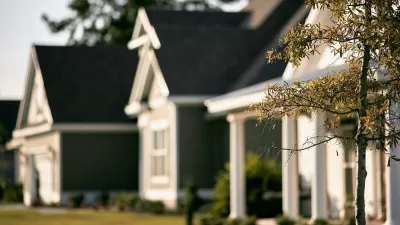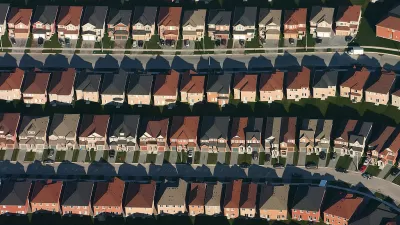Turning the page back to 1965, a woman confesses in Ladys Circle Magazine that she hates the suburbs. 'It isn't just monotony; it's stagnation!', she exclaims.
"Yes. I've been a long-term resident of the suburbs," the attractive woman next to me replied in answer to my question. Her brown eyes seethed with excitement. "And I think the word ‘term' is very appropriate. It's been almost a jail sentence!"
We looked around us as we drove through the streets of one of the towns in a suburban area called The Five Towns, on Long Island. Neat little houses bordered the roads, each painted white and framed by shrubbery or forsythia, with the number of the house painted in script above the garage. Often, a car was parked in the driveway. It seemed to be Hollywood's version of suburbia-a way of life to which every young woman facing marriage must aspire. A house-split-level, ranch or colonial style-in a suburb close enough to the city to offer entertainment on week-ends, yet far enough away to supply fresh air, a golf course, good schools for the children. It seemed to be the best of two possible worlds: a marriage of country life and city conveniences.
"It isn't," we were assured. "It has all of the drawbacks of living in the city-the crowds, the traffic, the exhaust fumes. And none of the advantages!" Here is the story she poured out to me, a story that had obviously been pent up inside her heart for years: When we moved out here it was beautiful. There were acres and acres of woodlands-elm trees, oak, birch and sassafras-and there were birds and wild life inhabiting them. Michael was two years old then. He's twenty now, and off at Yale, so I guess that must have been in 1947.
Louis and I plunked down every penny we owned for this white colonial style house you see. Then Deena came along (she's fifteen now) and Robbie (he's seven). But by the time Robbie was born, our town had changed so much I couldn't recognize it!
Instead of woodlands, there were houses-acres and acres of them. Each on its little 60 by 100 foot plot, each almost identical to the next. Back in the 50's, a group of us got together and petitioned the city fathers to set aside part of the woodlands as a public park. We were defeated. A real estate developer bought the property and built 5,000 homes, one almost on top of the next. Each has a little plot of garden, each has a driveway, each has a garage which houses a car- often two, sometimes three. And every day, each of those cars from those 5,000 homes pours onto roads which weren't meant to accommodate them. These days, getting from one place to another isn't just a test of driving skill, it's a test of patience and endurance! Sometimes when the crowds converge on those ugly shopping centers that have sprung up recently, it takes longer to get from one end of the Five Towns than it takes to drive to the city!"
Thanks to J Gelber & ModernMechanix.com
FULL STORY: ModernMechanix.com

Maui's Vacation Rental Debate Turns Ugly
Verbal attacks, misinformation campaigns and fistfights plague a high-stakes debate to convert thousands of vacation rentals into long-term housing.

Planetizen Federal Action Tracker
A weekly monitor of how Trump’s orders and actions are impacting planners and planning in America.

In Urban Planning, AI Prompting Could be the New Design Thinking
Creativity has long been key to great urban design. What if we see AI as our new creative partner?

Portland Raises Parking Fees to Pay for Street Maintenance
The city is struggling to bridge a massive budget gap at the Bureau of Transportation, which largely depleted its reserves during the Civd-19 pandemic.

Spokane Mayor Introduces Housing Reforms Package
Mayor Lisa Brown’s proposals include deferring or waiving some development fees to encourage more affordable housing development.

Houston Mayor Kills Another Bike Lane
The mayor rejected a proposed bike lane in the Montrose district in keeping with his pledge to maintain car lanes.
Urban Design for Planners 1: Software Tools
This six-course series explores essential urban design concepts using open source software and equips planners with the tools they need to participate fully in the urban design process.
Planning for Universal Design
Learn the tools for implementing Universal Design in planning regulations.
Gallatin County Department of Planning & Community Development
Heyer Gruel & Associates PA
JM Goldson LLC
City of Camden Redevelopment Agency
City of Astoria
Transportation Research & Education Center (TREC) at Portland State University
Jefferson Parish Government
Camden Redevelopment Agency
City of Claremont





























